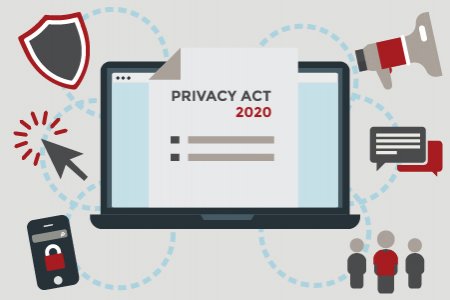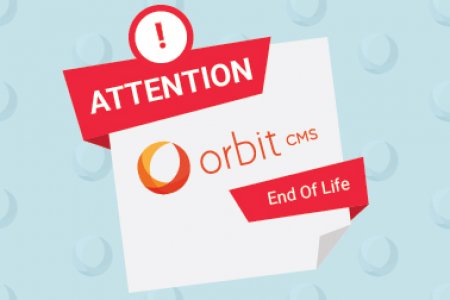We aim to respond to all messages within 1 business day. You'll be hearing from us soon!
In the meantime, perhaps you'd like to learn more...
Abandoned Cart Emails & the Unsolicited Electronic Messages Act 2007
Recently I have had the opportunity to work with a client around their digital marketing and sales strategy. Unfortunately I don’t get to do this as often as I would love to, but with this online e-Commerce-based client it was great to put together some strategies for maximising their presence and long-term sales through a variety of recommendations.
One of the recommendations that I put forward for this particular client was around the utilisation of Abandoned Cart Emails. This article isn’t about Abandoned Cart Emails per se – that’s a whole other topic. The one take home message you should etch in your mind though is that 67-68% (depending on your source) of online shopping carts are abandoned before the customer completes a sale – that’s over two-thirds of your potential sales going nowhere.
With this untapped market of potentially pre-engaged customers, the ability to send out ‘abandoned cart’ emails to this group to reignite a purchase is a fundamental strategy. If you want to read more on abandoned cart strategy, you can read the following:
- Abandoned cart follow-up strategy best practice & recommendations
- Shopping Cart Abandonment: Why It Happens & How To Recover Baskets Of Money
- How to Send Perfectly Timed “Abandoned Cart” Emails
- How Peak Design Recovers 12% of Abandoned Carts With Email Remarketing
- 13 Amazing Abandoned Cart Emails (And What You Can Learn From Them)
If you want to discuss this in a little more depth and how it could be implemented within your online shop, give us a call here at Apex Digital.
So why don’t we receive these type of emails all the time?
While you may have received one or two from an internationally based online business, there’s a couple of reasons.
- Business just aren’t aware of or haven’t embraced that a small investment of time and effort can result in huge positive repercussions on the bank statement, and
- In New Zealand we have the Unsolicited Electronic Messages Act 2007 that guides our ability to utilise the Abandoned Cart Emails.
The Unsolicited Electronic Messages Act 2007 is all about unsolicited (spam) emails (though you need to also consider instant messaging, SMS, multimedia message services etc.) that are of a commercial nature. Though it’s not a new piece of legislation, it is still important eight years on and worthy of discussion and reminding our clients about.
So why did it come about? It came about due to the rapid increase of companies that were selling lists of email addresses B2B. These email lists would be purchased by business and then used as part of the marketing mix. Obviously what eventuated was a proliferation of spam to unaware email address holders. For more information on spam and the different types that exist, refer to The Annoyance of Rubbish Emails – A Light-Hearted Review of Spam & Scams.
In essence, if you haven’t agreed to receiving an email from someone (i.e. consented) and they send you a message of a commercial nature – then they have fallen foul of the Unsolicited Electronic Messages Act 2007.
Don’t stop reading now though, as there are different types of consent. Say what? That’s right. There’s Express Consent, Inferred Consent and Deemed Consent. Let us look at this in a little more depth. This isn’t just related to the abandoned cart emails, but all commercially-based emails.
Express Consent
Express Consent is “a direct indication from the person you wish to contact that it is okay to send them message(s).”[1]
So in order to use an abandoned cart email, it is vital that you provide the opportunity for individuals to fill in a form or tick a box on a website that accepts the receipt of future correspondence. This may be a simple tick box on a sign-up form that is required to be ticked to receive the latest news and specials etc. It is important that this tick box is not a required field on your form – the user must opt-in to receiving correspondence.

Inferred Consent
Inferred Consent “is when the person you wish to contact has not directly instructed you to send them a message, but it is clear that there is a reasonable expectation that messages will be sent. For example, the address holder provided their email address when purchasing goods and services in the general expectation that there will be follow-up communication relating to that purchase. Another example is swapping business cards.”[2]
In regards to mailing lists, something to consider is that just because someone is currently on your mailing list and hasn’t unsubscribed to date, this does not infer consent – if in doubt, ask your mailing list if they do expressly consent – then there is no argument of Inferred; it is now Express Consent.
Deemed Consent
The weakest consent and not relevant for the abandoned cart emails is Deemed Consent. Deemed Consent “is when someone conspicuously publishes their work-related electronic address or mobile number (e.g. on a website, brochure or magazine). However if a publication includes a statement that the person does not want to receive unsolicited commercial electronic messages at that address, consent cannot be deemed.”[3]
Like Inferred Consent, legality is all about application and context. You cannot send a commercially-based email if the offer isn’t related to the activities of the business.
So for Abandoned Cart emails, should we only send to those of Express Consent?
Yes. In terms of e-Commerce, the aim (apart from the sale) has to be on securing Express Consent so clients can be remarketed to. It is important to note that if a customer does not provide Express Consent, you need to ensure that your website has the ability to save their email contact (to complete the original transaction), but also to ensure that the email address isn’t used again for any future marketing purposes.
It pays to get it right as well. With a penalty of up to $500,000 for a breach of the Act, plus potential compensation to victims, it is important to get your strategy right from the outset and ensure that you work within the confines of the Act. Simply put – if you get Express Consent, you cannot go wrong.
Our recommendations:
Here are the top 6 recommendations when it comes to abandoned cart emails (and emails in general).
- Always look to gain Express Consent for current and future correspondence – minimise the grey area around Inferred and Deemed Consent.
- Include the ability to unsubscribe from any mailing list. In NZ this is a legal requirement under the Act.
- Brand your emails with your company logo (at a minimum).
- Ensure all future correspondence to the customer via email is related to what they signed up for. If they signed up for a clothing purchase, don’t email them about insurance.
- Never accept offers of (or purchase) email addresses from another company!
- Never sell your email database to another company!
While all efforts have been made to provide accurate and relevant information on the Unsolicited Electronic Messages Act 2007, this article does not constitute legal advice or legal opinions. If you have any concerns about your current practices, we advise seeking the opinion and advice of a professional lawyer. Recently, Claudia King of Dennis King Law posted the following article, covering off unsolicited emails:
More information upon Unsolicited Electronic Messages Act 2007 and its application can be found on the Department of Internal Affairs’ website and publications.
- http://www.dia.govt.nz/Services-Anti-Spam-Index
- http://www.dia.govt.nz/diawebsite.nsf/wpg_URL/Services-Anti-Spam-Business-Info
Citations:
[1] The Department of Internal Affairs, Te Tari Taiwhenua: Unsolicited Electronic Messages Act 2007. (p.4).
[2] The Department of Internal Affairs, Te Tari Taiwhenua: Unsolicited Electronic Messages Act 2007. (p.4).
[3] The Department of Internal Affairs, Te Tari Taiwhenua: Unsolicited Electronic Messages Act 2007. (p.5).
Related posts
AWESOME! LET'S GET STARTED
TELL US HOW WE CAN HELP
We aim to respond to all messages within 1 business day. You'll be hearing from us soon!
In the meantime, perhaps you'd like to learn more...





